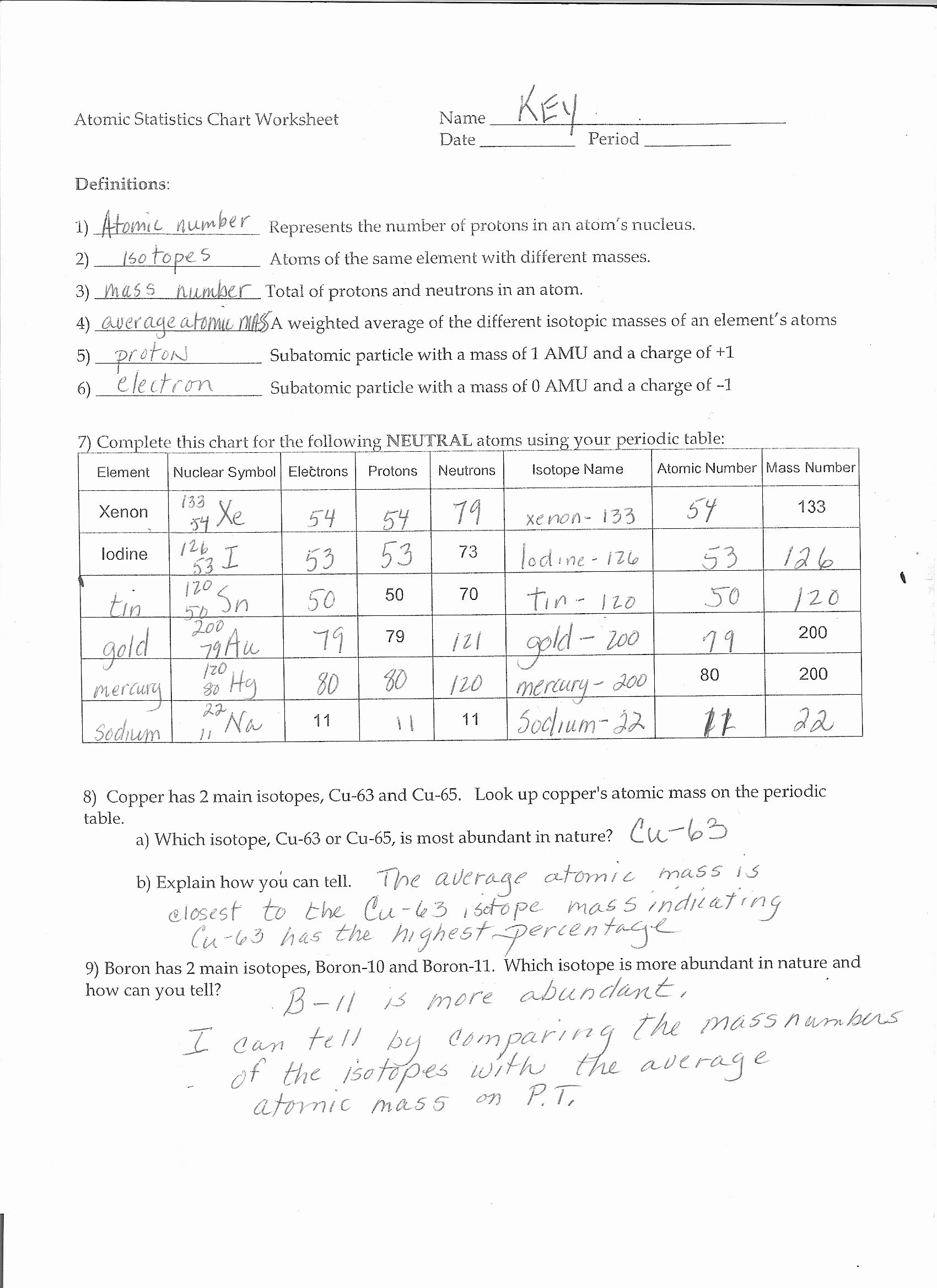Ever wondered what makes one element different from another, even if they share the same chemical properties? We all know about carbon, oxygen, and hydrogen, but what if we told you there are multiple versions of these elements, each with a slightly different twist? Enter the fascinating world of isotopes – versions of an element that differ only in the number of neutrons they contain. This practice worksheet isn’t just about memorizing facts; it’s a journey into the heart of atomic structure and how these tiny variations can impact our world in profound ways.

Image: mirajmikolaj.blogspot.com
The concept of isotopes often feels like venturing into a hidden world of science, but that’s exactly what we aim to change. This practice worksheet isn’t just about ticking boxes; it’s about building an understanding of how isotopes work and why they are so crucial, from powering our lives to unraveling the secrets of the universe. Let’s embark on this journey together, one practice question at a time, unlocking the mystery of isotopes and their remarkable impact.
Delving Deeper: A Journey through Isotope Practice
Before we dive into the practice worksheet, let’s solidify our understanding of isotopes. Remember those tiny, negatively charged particles we call electrons? They whiz around a nucleus, the heart of an atom, composed of even tinier particles: protons and neutrons. Protons carry a positive charge, while neutrons are neutral. The number of protons essentially defines the element; for instance, every carbon atom will always have six protons. However, the number of neutrons can vary, creating isotopes.
To illustrate this, consider carbon-12 and carbon-14. Both have six protons, making them carbon. However, carbon-12 has six neutrons, while carbon-14 has eight. This seemingly small difference in neutrons gives isotopes different properties. For example, carbon-14 is radioactive, decaying over time and used for dating ancient artifacts.
Understanding Isotopes: A Building Block of Chemistry
- Atomic Number: The number of protons in an atom; defines the element.
- Atomic Mass: The sum of protons and neutrons in an atom; isotopes differ in atomic mass.
- Isotopes and Stability: Some isotopes are stable, while others are radioactive, decaying over time.
- Radioactive Isotopes and Half-Life: Radioactive isotopes have a specific half-life, the time taken for half of the nuclei to decay.
Unraveling the Isotope Practice Worksheet:
Let’s dive into a sample isotope practice worksheet. These exercises test our understanding of how to identify isotopes, calculate their atomic mass, and understand their radioactive behavior.
Sample Questions:
- Identifying Isotopes:
- Given the symbol “238U,” identify its atomic number, mass number, and number of neutrons.
- Which of these pairs represent isotopes: (a) 14C and 14N, (b) 12C and 14C, (c) 16O and 18O?
- Calculating Atomic Mass:
- What is the average atomic mass of chlorine if chlorine-35 has an abundance of 75% and chlorine-37 has an abundance of 25%?
- Radioactive Decay:
- What is the half-life of a radioactive isotope if it takes 20 years for 75% of it to decay?
Beyond the Worksheet: Exploring the Real-World Applications of Isotopes
It’s not just about theoretical understanding. This practice worksheet is a bridge connecting us to a world of real-world applications. Let’s explore how isotopes shape our lives:
Medical Marvels: Radioactive isotopes are employed in medical imaging techniques like PET scans, allowing doctors to visualize and diagnose diseases. They also play a vital role in radiation therapy, targeting cancerous cells.
Dating the Past: Radioactive isotopes like carbon-14 are invaluable for dating fossils, archaeological artifacts, and even geological formations, revealing the age of our planet’s history.
Powering the Future: Radioactive isotopes power nuclear reactors, providing a crucial source of electricity. However, it’s crucial to manage nuclear waste safely and responsibly.
Scientific Breakthroughs: Isotopes are crucial tools for scientific research, enabling the study of various processes from chemical reactions to climate changes, revealing the secrets of our universe.
From Our Daily Lives to the Cosmos: Understanding isotopes empowers us to analyze the world around us, from the food we eat to the medicines we take. They also shed light on the origins of the cosmos, revealing how stars are born and evolve.

Image: printablezonegippos.z21.web.core.windows.net
Expert Insights: Unveiling the Secrets of Isotopes
Talking with experts from various fields like nuclear physics, archaeology, and medicine, we can understand the real-world impact of isotopes:
- Dr. Emily Carter, a nuclear physicist, emphasizes the crucial role of isotopes in nuclear energy development and the ongoing research to improve safety and efficiency.
- Dr. John Smith, an archaeologist, highlights the indispensable nature of isotopes for carbon-dating, revealing insights into ancient civilizations and their interactions with the environment.
- Dr. Sarah Brown, a physician, explains how radioactive isotopes are vital for medical imaging, allowing early detection and targeted treatment of diseases.
Isotope Practice Worksheet
Beyond the Practice: A Call to Action
This practice worksheet is just the beginning. The world of isotopes is vast and fascinating. We encourage you to explore further, delving into the history of its discovery, the contributions of scientists like Marie Curie, and the ethical considerations surrounding their use.
Share your experiences with isotopes, whether it’s a science project or a visit to a nuclear power plant. Let’s continue this journey of understanding, embracing the marvels of isotopes and their impact on our lives.






